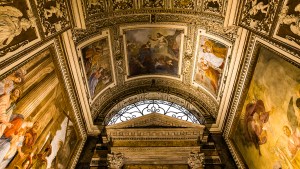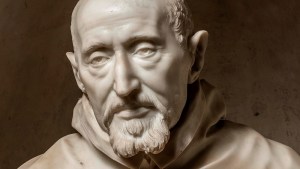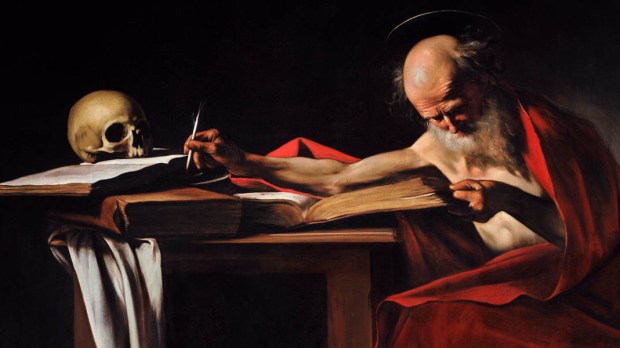Have you ever been impressed, or inspired, or even overwhelmed by the beauty of works of 17th-century art and architecture such as the throne of St. Peter and the window above it, depicting the Holy Spirit, in St. Peter’s Basilica? Have you visited a gilded, glorious colonial-period church in Latin America, full of columns and carved angels, saints, and figures from nature — and felt the need to kneel down and pray? If so, you’ve experienced the power of Baroque art and architecture.
The word “baroque” is of Portuguese origin, from “berrueco,” meaning an irregular pearl. The purpose of Baroque art (17th-18th century) — which evolved out of the Renaissance and Mannerism — is mainly to educate the people of God in the knowledge of religion and spirituality, imbued with emotion, offering the Creator the most sublime works that the artists can produce. This was in part a response to the Protestant reformation; the Church recognized the need to reach out to people of all levels of society through visible, tangible works that taught them the glory of Catholic truth.
The Baroque period leaves aside classical serenity in order to express a world in movement and the participation of the senses. The Church actively encouraged the development of this art, as it had with other styles, as both the figurative arts and music were aimed at spurring the devotion of the faithful through the contemplation of aesthetic beauty as a reflection of the Divine harmony.
Baroque architecture is seen mainly in churches, cathedrals, and monasteries, but also in some palaces and secular architecture. It is a expression of Christian culture that manifested itself in all spheres of society.
Italy was considered the birthplace of the Renaissance and the Baroque, where several artists stood out for their great talent and for the great religious and Christian themes present in their works.
Caravaggio (1571-1610)
He is known for the drama of his works. He painted religious themes and explored the contrast between light and shadow. Some of his works are: “The Taking of Christ,” “Flagellation of Christ,” “The Death of the Virgin,” “The Dinner at Emmaus,” and “David with the Head of Goliath.”
Bernini (1598-1680)
Many of the sculptor and architect’s works are in Rome and the Vatican, including “Saint Peter’s Square,” “Saint Peter’s Baldachin,” “The Ecstasy of Saint Teresa,” “Bust of Paul V,” and the design of the angels on “Ponte Sant’Angelo.”
Borromini (1599-1667)
The works of the architect and sculptor include the “Sant’Agnese in Agone,” “Palazzo Spada,” “Palazzo Barberini,” and the “Church of San Carlo alle Quattro Fontane.”
Spirituality is the fundamental key to the Baroque. It’s a style that reflects popular sentiment and the culture of its epoch. In view of an infinite and sublime Divinity, artists sought to surpass themselves with an art that seemed to have no limits in its technical perfection and in the intensity of the emotions and feelings that it expressed. The human psyche is nourished and enriched by the contemplation of these great works that reflect the need for the infinite that every person holds in his heart.

Read more:
Love the beauty of Rome? Thank Michelangelo, Caravaggio, and Sts. Peter and Paul!

Read more:
Uncannily lifelike Bernini sculpture leaves Rome for first time for the U.S.

